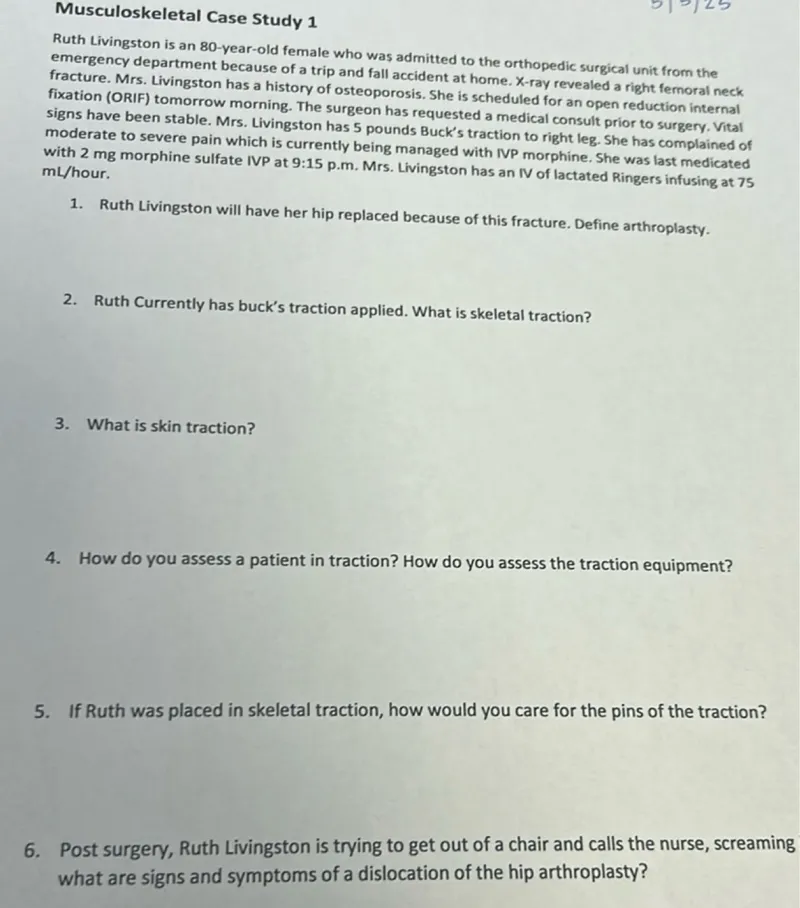Questions: 1. Ruth Livingston will have her hip replaced because of this fracture. Define arthroplasty. 2. Ruth Currently has Buck's traction applied. What is skeletal traction? 3. What is skin traction? 4. How do you assess a patient in traction? How do you assess the traction equipment? 5. If Ruth was placed in skeletal traction, how would you care for the pins of the traction? 6. Post surgery, Ruth Livingston is trying to get out of a chair and calls the nurse, screaming. What are signs and symptoms of a dislocation of the hip arthroplasty?

Transcript text: 1. Ruth Livingston will have her hip replaced because of this fracture. Define arthroplasty.
2. Ruth Currently has Buck's traction applied. What is skeletal traction?
3. What is skin traction?
4. How do you assess a patient in traction? How do you assess the traction equipment?
5. If Ruth was placed in skeletal traction, how would you care for the pins of the traction?
6. Post surgery, Ruth Livingston is trying to get out of a chair and calls the nurse, screaming. What are signs and symptoms of a dislocation of the hip arthroplasty?





